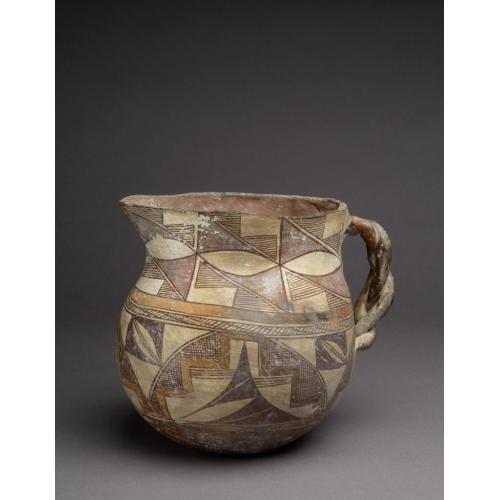
Photograph by Addison Doty. Copyright 2011 School for Advanced Research.
Pitcher
Date: 1890-1900
Artist or Maker: Unknown
Dimensions:
Dimensions: 21.6 × 20.3 cm (8 1/2 × 8 in.)
Weight: 1.9 kg (4.15 lb.)
Medium: clay | paints
Credit Line: Gift of Miss Jane B. Evans in 1929.
Place Made:
Valencia, Cibola, Bernalillo, and Sandoval Counties, New Mexico, Southwest, United States, North America
Object Number: IAF.1191
Not on view
Tribal Collection Review RemarksAccording to the participants in the Acoma collection review visit February 17-19, 2016 (Events Record “Collection Review: Acoma Pueblo Review 5”): The participants were not certain if this was Acoma or Laguna. The construction (execution and heaviness) and style of design did not convince all the participants that it was Acoma although some of the design elements are typical Acoma. The clay also appears to be more beige in color. Two ropes of the braid on the handle are brown and one is orange – the brown ones are actually faded black paint. There is a pathway break at the base.
In Collection(s)
Bibliography:
Acoma and Laguna Pottery
- Pg. p. 7, 217
- Fig. 1.5
The Pottery of Acoma Pueblo
- Pg. 325
- Fig. 20.5
The Indian Arts Research Center, in collaboration with Native American community scholars, strives to present accurate collections records. Records may be updated as new information becomes available and is reviewed with the Native American community having cultural affinity to particular items. Please write to iarc@sarsf.org if you have questions or concerns related to the documentation.
